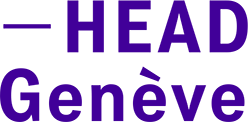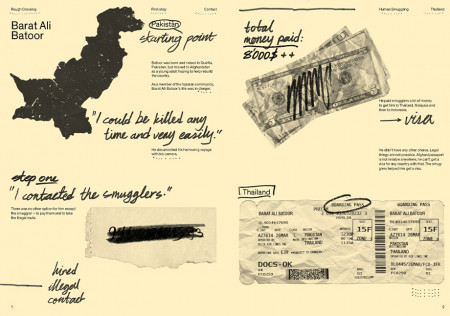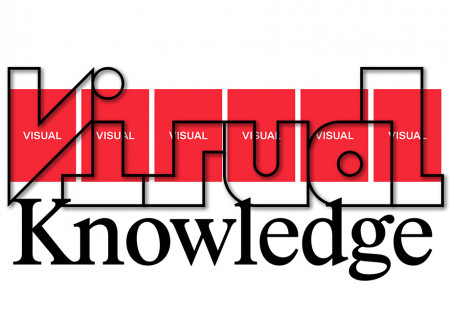- The school
- Studies and Research
- BACHELOR
- MASTER
- DOCTORATE
- RESEARCH
- TRANSDISCIPLINARITY
- POOLS
- CONTINUING EDUCATION
- Continuing education 2025-2026
- Artificial Intelligence, initiation
- Artificial Intelligence, Advanced
- Artificial intelligence open-source, ComfyUI
- Creative coding
- Engage with drawing
- Frame-by-frame animation
- 3D exhibition modeling in SketchUp
- 3D modeling, Blender
- Point cloud scanning
- Documentary podcast
- Serious games
- For students
- Studying at the HEAD
- InfoLab
- Living in Geneva
- Tuition fees and sholarship
- Library
- Regulations and instructions
- Projects
- Events
- Press
- Partnerships and prizes
Master Visual Knowledge
Program Overview
The Master in Visual Knowledge trains professionals capable of making content from a wide range of fields (scientific, economic, cultural, social, environmental, etc.) both visible and understandable. These experts master the analysis and graphic transformation of numerical, textual, and narrative data into clear and accessible visual systems, thereby facilitating communication with diverse audiences.
Projects are grounded in narrative strategies drawn from the humanities (journalism, sociology, anthropology), positioning visualization as a powerful medium for knowledge transmission. The curriculum combines the mastery of analog, digital, and generative tools with a critical reflection on the social and ethical impact of images in an age of information overload.
The program addresses the responsibility of designers in facing contemporary challenges, while exploring inclusive, ethical, and sustainable visual approaches. It emphasises real-world projects in collaboration with professionals, fostering hands-on experience, the development of technical, theoretical, and interpersonal skills, as well as the growth of a professional network.
An internship, which is optional and of variable duration, can complement the course between the first and second year.
Program Structure
The program is structured around "labs" which form the core of the training. These labs involve working on real projects in collaboration with diverse partners from various fields and are supervised by instructors with complementary approaches. "Technical" blocks are also offered to learn new tools and expand creative possibilities.
The curriculum integrates theoretical reflection on the image, as well as workshops led by guest lecturers from Switzerland and abroad, offering students a variety of rich and diverse perspectives.
Learning Objectives – First Year
- Semester 1 – Explore, Analyse, and Interpret
This semester introduces students to the reception and understanding of content from various disciplines. It enables them to analyze data to understand its structure, context, and stakes, and to explore innovative visual languages. Students acquire essential technical foundations – both analog and digital – to translate these contents into clear visual systems, while building a solid visual culture and awareness of image usage. - Semester 2 – Gather, Conceptualise, and Adapt
This semester fosters a proactive approach in collecting data and defining the forms the project will take. Students further develop their mastery of technical tools through more complex projects, while integrating new media and methods. The goal is to acquire a complete set of skills to design and adapt visual supports for a variety of communication channels.
Learning Objectives – Second Year
- Semester 3 – Position, Lead, and Convey
This semester allows students to clarify their individual approach, both in the choice of topics they are passionate about and in how they visually communicate them. Writing a theoretical thesis further strengthens students’ area of specialization while sharpening their ethical and professional positioning and helping them consolidate a distinct visual identity. - Semester 4 – Design, Finalise, and Promote
This semester is dedicated to the full realisation of a personal practical project, from initial concept to final production. Students apply all acquired skills to manage each phase of the project: content selection, art direction, visual creation, and the choice of appropriate techniques. They also design the communication supports and develop an effective strategy to promote their work. Emphasis is placed on professional communication, showcasing creations, and the spatial presentation of projects. This semester is also designed to strengthen oral presentation and networking skills, which are equally essential for project promotion and successful professional integration.
Career Prospects
Graduates of the Master in Visual Knowledge are equipped with the skills to work across several sectors of visual communication and knowledge mediation, in roles such as:
–Specialised graphic designer
–Scientific or educational illustrator
–Data designer or information visualisation consultant
–Graphic facilitator or visual communicator
–Visual communication advisor or innovation project manager
–Cultural mediator
Practical Information
The Master is open to holders of a Bachelor’s degree (in any field) who possess skills in illustration and/or graphic design.
It is a full-time program, offering 120 ECTS credits.
Teaching language : French. See all language requirements
Visual Knowledge MA studies at HEAD – Genève are in French.
Candidates whose upper-secondary level qualification has not been issued by a French-speaking institution must, once they have been admitted, submit a B2-level French certificate by 31 August.
Candidates do not have to submit this B2-level French certificate if they hold:
- an upper-secondary level qualification from a German-speaking Swiss canton or from Ticino that includes French as a subject.
- a tertiary level A qualification (Bachelor's degree or equivalent qualification of at least 180 ECTS credits) in which French is the official language of instruction.
Head of Department
Alice Franchetti
Assistant
Flaurant Kadrija
Invited sepakers
Apian, (Aladin Borioli), Giliane Cachin, Xavier Erni, Eurostandard (Ali-Eddine Abdelkhalek, Pierrick Brégeon, Clément Rouzaud, Thomas Petit), Amaury Hamon, Matthieu Huegi, Alexis Hominal, Clémence Imbert, INT Studio (David Colombini, Marc Dubois, Laura Perrenoud), Benoît Jeannet, Dimitri Jeannottat, Roman Karrer, Anette Lenz, Olivier Meystre, Tamara Niklaus, Saul Pandelakis, Raphaël Pieroni, Johanne Roten, Daniel Sciboz, Tibor Udvari.
Degree awarded:
Master of Arts HES-SO en Design avec orientation Visual Knowledge


